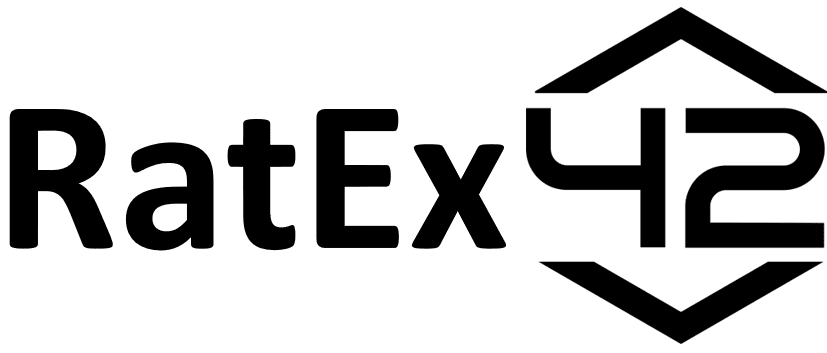Frax Finance
Key Data
- Trading Name: Frax Finance
- Legal Entity: Frax Finance
- Activities: Decentralized Finance (DeFi), Stablecoin Issuance (FRAX), Governance Token (FXS), Yield Generation
- Location: Global (Decentralized, primarily operates in the Ethereum ecosystem)
- Regulations: As a DeFi protocol, Frax Finance operates without direct regulatory oversight but may face regulatory scrutiny regarding stablecoins.
- Key People:
- Sam Kazemian – Founder
- Travis Moore – Co-Founder
- Latest News: Frax Finance
Overview
Frax Finance is a decentralized finance (DeFi) protocol that introduced the first fractional-algorithmic stablecoin system. It was founded by Sam Kazemian and is designed to provide a more stable and scalable form of decentralized currency. The Frax ecosystem is built around two main tokens: FRAX, a stablecoin partially backed by collateral, and Frax Shares (FXS), the governance token that helps maintain the system’s stability and governs the protocol.
Frax Finance aims to be the decentralized central bank of cryptocurrency, offering a stablecoin that is highly scalable, partially algorithmic, and partially backed by collateral.
Key Features
- Fractional-Algorithmic Stablecoin: Frax pioneered a new concept in the stablecoin space by introducing a stablecoin partially backed by collateral and partially stabilized algorithmically. This hybrid model allows for scalability while maintaining a peg to the US dollar.
- Frax Share (FXS): FXS is the governance and utility token of the Frax ecosystem. FXS holders are responsible for decision-making regarding protocol upgrades, collateral ratios, and other key functions of the protocol. FXS is also used to absorb volatility when necessary, helping to maintain the peg of the FRAX stablecoin.
- Decentralized Central Bank: Frax aims to position itself as a decentralized alternative to traditional central banks by providing a reliable and scalable stablecoin for use in decentralized finance (DeFi) ecosystems and beyond.
Products and Services
- FRAX Stablecoin: The FRAX stablecoin is the centerpiece of the Frax Finance ecosystem. Its value is pegged to the US dollar, and its supply is dynamically adjusted based on demand through a combination of collateral backing and algorithmic stabilization. The collateral ratio adjusts algorithmically, enabling Frax to become increasingly decentralized over time.
- Frax Shares (FXS): The governance and utility token of Frax, FXS plays a critical role in maintaining the stability of FRAX and is used for governance decisions such as adjusting collateral ratios and future upgrades. It also absorbs excess volatility in the ecosystem.
- Lending and Yield Protocols: Frax integrates with various DeFi protocols, offering yield generation opportunities through staking, lending, and liquidity provision. Users can stake FRAX or FXS on multiple platforms to earn rewards.
Regulation
Frax Finance operates in the decentralized finance (DeFi) space, which is largely unregulated at this time. As a decentralized protocol, Frax Finance is governed by its community, with key decisions made by FXS token holders. However, as with other DeFi projects, Frax may face regulatory scrutiny as governments worldwide look to regulate stablecoins and decentralized financial services.
Challenges: Regulatory uncertainties surrounding stablecoins and decentralized protocols may present challenges, particularly in the United States and Europe, where regulatory bodies are increasingly focusing on the DeFi sector.
Financial Situation
Frax Finance maintains a robust financial structure through its fractional reserve model. The protocol uses a combination of collateral and algorithmic adjustments to maintain the stability of FRAX. The collateral backing FRAX includes a variety of assets, and the protocol dynamically adjusts the collateral ratio based on market conditions.
Treasury: As of the latest data, Frax Finance’s treasury is reported to hold $57.1 million in assets, ensuring the stability and financial health of the protocol.
Risks: The financial stability of Frax relies on the performance of the assets used as collateral and the success of the algorithmic stabilization mechanism. Sudden market shocks or volatility in the collateral assets could impact the stability of FRAX.
Customer Feedback
Frax Finance is widely regarded in the DeFi community for its innovative approach to stablecoins and its fractional-algorithmic model. Users appreciate the scalability and flexibility of FRAX, especially in decentralized finance applications.
Strengths: The hybrid model combining collateral and algorithmic stabilization is seen as a major innovation in the stablecoin space. Frax has earned praise for its scalability and the robustness of its decentralized governance model.
Weaknesses: The reliance on algorithmic stabilization introduces risks, particularly in volatile market conditions. Some users express concerns about the potential for instability if the collateral ratio is not properly managed during periods of market stress.
Leadership
- Sam Kazemian – Founder
- Travis Moore – Co-Founder
The leadership team of Frax Finance is composed of experienced individuals in the DeFi space, with Sam Kazemian as the primary founder and visionary behind the fractional-algorithmic stablecoin model.
Compliance Check
Reputation: Frax Finance is well-regarded in the DeFi space for its innovative approach to stablecoins and its commitment to decentralized governance. However, like other DeFi protocols, Frax faces regulatory uncertainties, particularly regarding its hybrid stablecoin model.
News Highlights: Frax has continued to innovate with new protocols and integrations, including partnerships with other DeFi platforms to enhance the utility of FRAX and FXS in the broader DeFi ecosystem. Recent developments include proposals to integrate Frax with Centrifuge Prime, further expanding its reach into real-world assets.
Rating Conclusion
Frax Finance has established itself as a leader in the DeFi space with its innovative fractional-algorithmic stablecoin model. The protocol’s combination of collateral and algorithmic stabilization offers scalability and flexibility that many other stablecoins lack. However, the risks associated with algorithmic models, particularly during periods of market volatility, remain a concern. Frax is well-positioned for growth in the DeFi ecosystem but may face regulatory hurdles as global regulators focus more on stablecoins.
Recommendation: Frax is an excellent choice for DeFi users looking for a stable, scalable, and decentralized stablecoin solution. However, users should be aware of the potential risks associated with its fractional-algorithmic model, especially during volatile market conditions. Frax is placed on our Orange Compliance List due to the regulatory uncertainties surrounding its hybrid stablecoin model.


